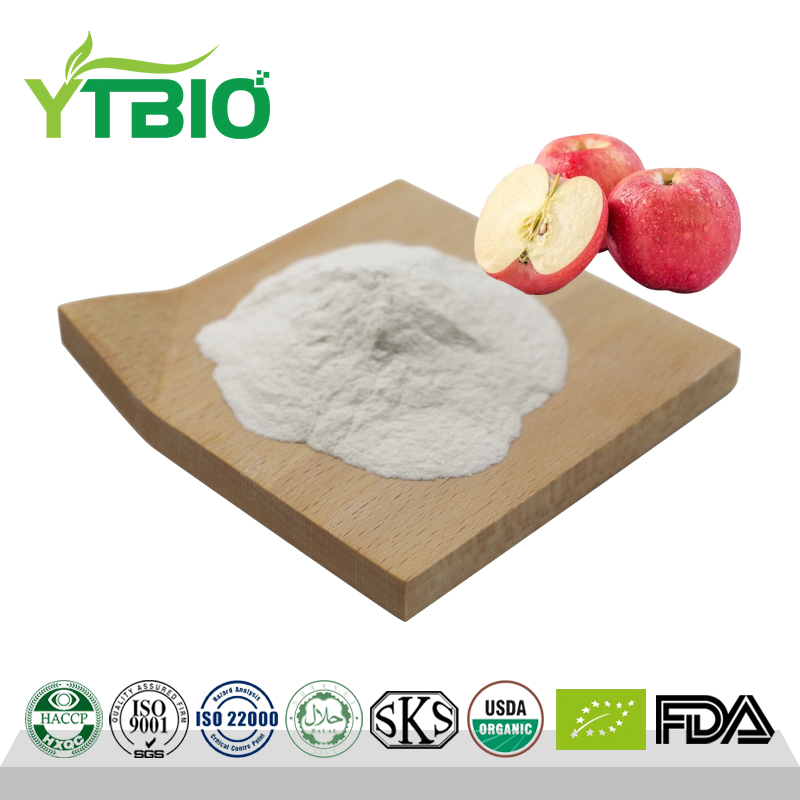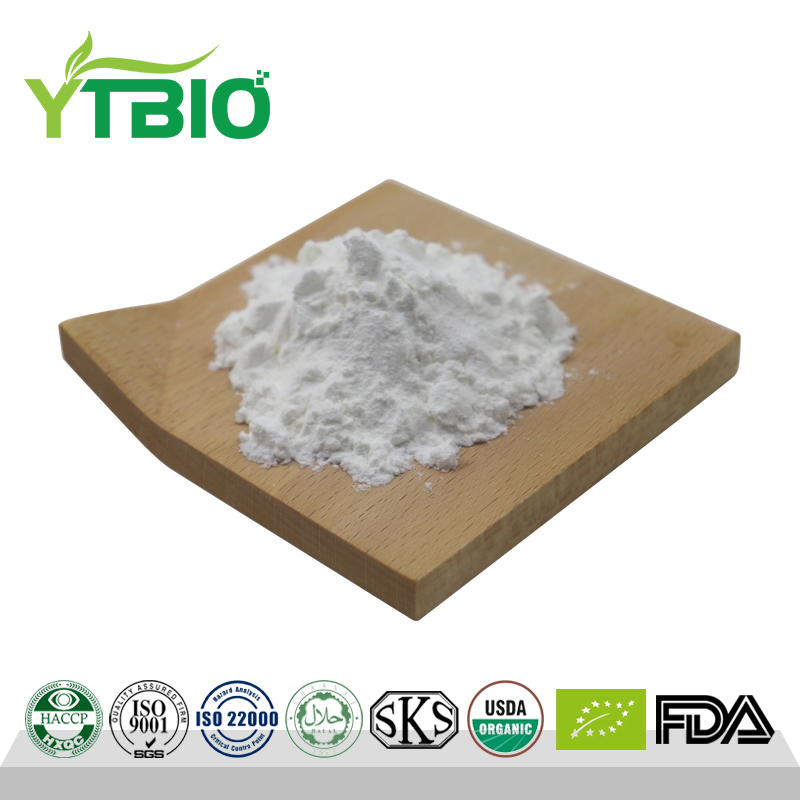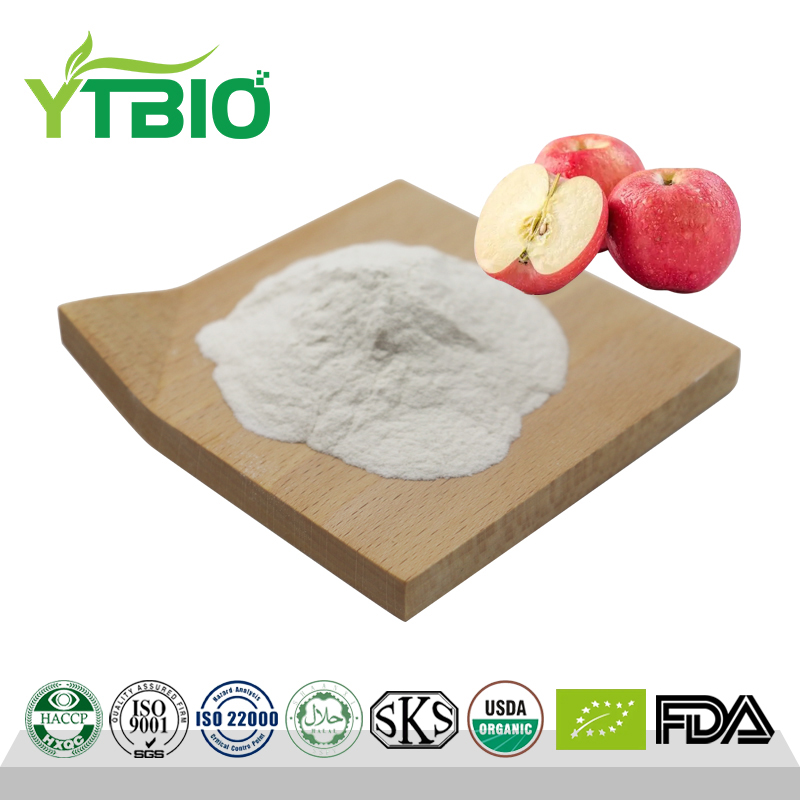Phlorizin

Product Name: Phlorizin
Appearance: Light yellow needle-like crystals
Source: Roots, stems, bark and other parts of plants
CAS NO.: 60-81-1
Molecular Formula: C12H24O10.2H2O
Molecular Weight: 228.25
Packing: 1kg/aluminum foil bag; 5kg/carton; 25kg/cardboard drum (or according to customer requirements)
Storage conditions: This product should be sealed and shaded, stored in a dry
Certifications: ISO9001, ISO22000, Kosher, Halal, HACCP
Shipping speed:1-3 days
Solubility: When the content is low, it has good water solubility; when the content is high, it is difficult to dissolve in water.
What is Phlorizin?
Phlorizin is a phenolic substance extracted from apples, apple tree bark and leaves. It accounts for up to 95% of the total phenolic substance content in apple trees. It has anti-tumor activity and is effective against skin cancer. Has therapeutic effect. Deoxyphloridzin has also been widely studied and used. Its degradation product phlorizol can effectively inhibit microbial activity. When used in facial skin care products, it can inhibit the formation of melanin and lighten the color of dark brown, gray spots and freckles. In addition, phloridzin is a glycoside composed of phloretin and glycosides combined into glucosides. The glycosides are hydrolyzed to form glucose. In addition, due to its high content, it is considered by many scholars to be a storage form of carbohydrates. Recent clinical studies at home and abroad have shown that phloridzin has good efficacy in treating diabetes.

Phlorizin Function
Antibacterial
Phlorizin is extracted from apples, apple tree bark and leaves. It is a phenolic substance in the apple tree. Phloridzin accounts for 95% of the total phenolic substances in the apple tree, and it has the highest content. Phloridzin is a glycoside composed of phloretin and glycosides combined into glucosides. The glycosides are hydrolyzed to form glucose. In addition, due to its high content, it is considered by many scholars to be a storage form of carbohydrates. Its degradation product phlorizol can effectively inhibit microbial activity.
Anti-oxidation
Phlorizin is a glycoside derivative of dihydrochalcone phloretin, which has certain antioxidant properties and antioxidant characteristics. Although the molecular structure of phloridzin weakens its antioxidant properties due to glycosylation of the 2'-hydroxyl group, its comprehensive antioxidant capacity is still higher than that of VC and VE, and it has a unique antioxidant mechanism. In addition, phloridzin can be hydrolyzed and detached from its glycoside group in the body to form phloretin, which has better antioxidant capacity. Used in facial products, it can inhibit the formation of melanin and reduce the color of tan, gray spots and freckles.
Treat diabetes
Young leaves of apples and sweet tea are rich in phloridzin. The current mechanism of action for treating diabetes is basically to promote insulin secretion or improve insulin sensitivity. Phloridzin specifically and competitively inhibits SGLT1 and SGLT2. Transport of glucose molecules. It has been confirmed in several animal models that phloridzin can promote glucose secretion and reduce fasting and postprandial blood sugar levels without hypoglycemic side effects.
Improve memory skills
Brain activity consumes a large amount of energy supplied by glucose. Many experiments have proven that circulating blood sugar levels control the process of learning and memory. The effects of many drugs that improve memory are related to the ability to release liver glycogen, increase brain blood sugar levels, and utilize of. However, phloridzin inhibits blood sugar from entering the brain, so the mechanism by which phloridzin enhances the brain's memory ability is obviously independent of blood sugar levels or the brain's ability to absorb sugar, so phloridzin can enhance memory ability.
Application
Medical applications: Phlorizin can be used to treat stubborn diabetes. It can inhibit the reabsorption of glucose by the proximal convoluted tubule of the kidney, increase urinary glucose excretion and thereby reduce blood sugar levels, without affecting serum insulin levels;
Cosmetic applications: Phlorizin can be used to whiten and treat acne. Phlorizin can prevent glucose from entering skin epidermal cells, thereby slowing down the secretion of sebum and preventing the occurrence of acne. Tyrosinase is the main rate-limiting enzyme for melanin biosynthesis, and phlorizin can achieve whitening effects by inhibiting tyrosinase. In recent years, phloridzin has become popular among women.
Food application: Phlorizin also has antioxidant effects and can be used in a variety of antioxidant foods.



